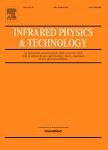版权所有:内蒙古大学图书馆 技术提供:维普资讯• 智图
内蒙古自治区呼和浩特市赛罕区大学西街235号 邮编: 010021

作者机构:Univ Elect Sci & Technol 2006 Xiyuan Blvd Chengdu 611731 Peoples R China Nanjing Univ Sci & Technol 200 Xiaolingwei St Nanjing 210094 Peoples R China Novelteq Ltd 6 Xingzhi Rd Nanjing 210046 Peoples R China
出 版 物:《INFRARED PHYSICS & TECHNOLOGY》 (红外物理学与技术)
年 卷 期:2021年第117卷
页 面:103847-103847页
核心收录:
学科分类:070207[理学-光学] 07[理学] 08[工学] 0804[工学-仪器科学与技术] 0803[工学-光学工程] 0702[理学-物理学]
主 题:Infrared thermography Thermal wave image Image deblurring Depth residual network Encoder-Decoder
摘 要:Thermal wave imaging is a nondestructive testing (NDT) technology widely used to detect defects for various materials. It is important for quality control purposes to be able to clearly define the sizes of the defective areas. Due to the diffusive nature of thermal waves the acquired images contain varying degrees of blur depending on the depth of the defects, which severely affects the ability to define the defects. Conventional edge enhancement algorithms are hardly to achieve desirable results. Using deep convolutional neural network, we designed a deep residual network based on an encoder-decoder structure. Through the depth residual and skip-connection structures, we can effectively solve the vanishing gradient problem and improve the ability of feature extraction. The experimental results demonstrate that the proposed method shows superior performance over conventional image enhancement algorithms by providing richer information with higher contrast and more details.